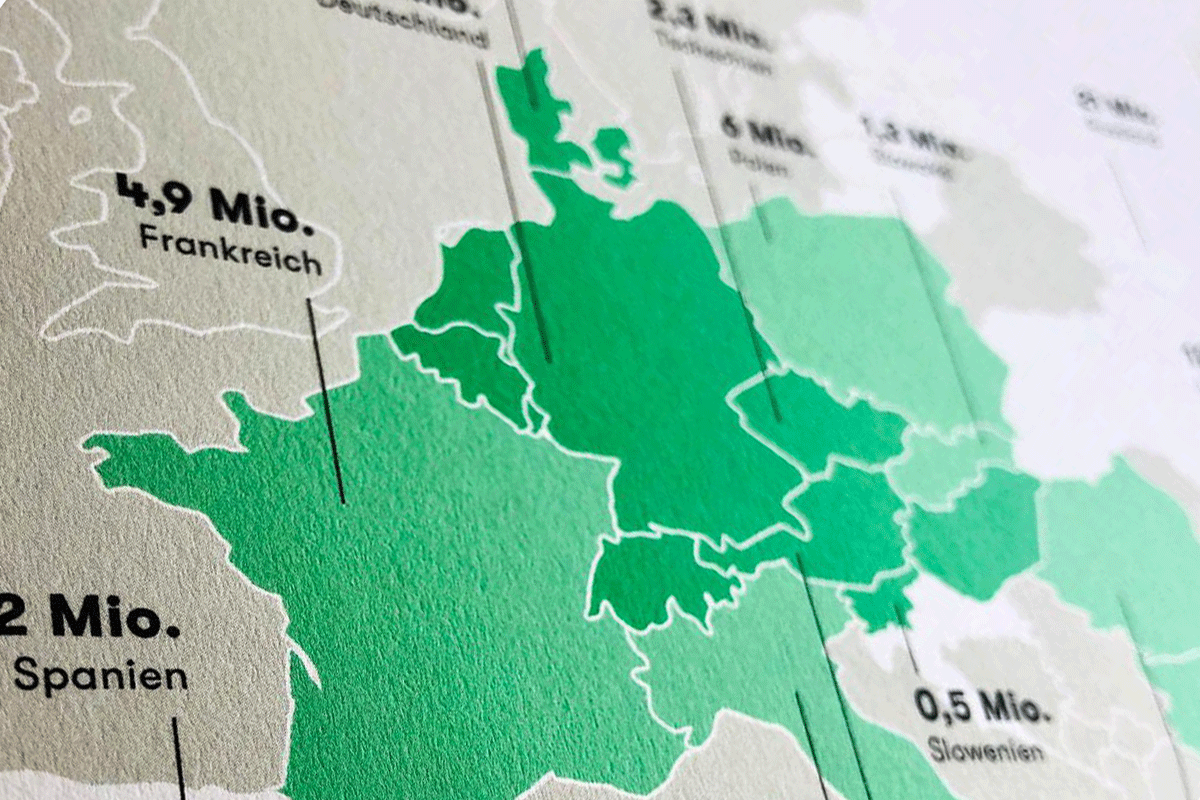Article

The federal government’s climate targets pose major challenges for the real estate industry: particularly when it comes to existing buildings, owners and managers face a giant task in coping with the growing demands for energy efficiency and climate protection. The regulatory underpinnings for this are often enshrined both in European law and the resultant derived national legal provisions. In complying with these requirements, without losing sight of precepts of economy and affordable living space, low-investment measures could offer helpful leverage. The digitisation of the building infrastructure lays the foundations for the optimum management of energy installations and maximum consumption transparency for users, as well as allowing portfolio holders also to make valuable efficiency gains.
One of the legal cornerstones to which the real estate industry must pay attention is the European Union’s Energy Efficiency Directive. Through the EED the EU lays down its declared political energy savings goal. Against a background of anthropomorphic global warming, in 2007 the EU member states agreed to reduce primary energy consumption across all sectors by 20 per cent by 2020. The EED finally came into force on 4 December 2012. It prescribes activities to strengthen energy efficiency which must be implemented by the member states: among the key points of EED 2012 from the real estate industry’s viewpoint are the fixing of national energy efficiency targets for 2020, a renovation rate for the central government buildings of European member states of three per cent per year and obligatory mean annual energy savings by member states of 1.5 per cent for the years from 2014 to 2020.
To work towards the achievement of the 2030 climate protection targets, on 4 December 2018 the Council of the European Union passed amendments to the Energy Efficiency Directive (EED) of 2012. By doing so they provided a legal foundation for the political energy efficiency targets for 2030. The amended version of the EED provides (in Article 9 ff. EED among other places) that, from November 2020 onwards, new buildings and modernised buildings must be equipped exclusively with remotely readable consumption recording devices. Existing buildings must be equipped by January 2027, but only provided this can be done cost effectively.
From January 2022 onwards portfolio holders and property managers will also face the challenge of furnishing residents, over and above their annual billing, with monthly information about their consumption if the property is equipped with remotely readable consumption recording devices. The consumption information may be provided by post or digitally, for example via an online portal or an app. Despite all the obstacles, the introduction of remotely readable consumption recording devices does also offer significant benefits for portfolio holders: Housing management processes will be simplified, when tenants move in and out 100% accurate final energy bills can be prepared, cooperation models can be implemented via app, and it will open up a direct communication channel between landlords and tenants.
A further upcoming challenge for EU member states is the smart meter roll-out prescribed in 2009 in the EU’s third Internal Market Directive*. This imposes an exacting task on the real estate industry: by 2020 80 per cent of all consumers must be equipped with intelligent metering systems. The aim of this is to achieve secure and standardised communications in energy networks and to support the digitisation of the energy transition. Fur users the goal will be to ensure greater transparency concerning their own power consumption and to highlight potential savings. It will permit the identification of high-consumption devices and make bills easier to check.
However, when it implemented the directives the federal government made use of an alternative regime whereby the “80 per cent approach” can be subjected to cost-benefit analysis, with a national roll-out strategy being developed in the context of this process. The justification given for this was consumer protection, applying the principle that there should not be a roll-out “at any price”. In other words residents, generators, metering point and network operators should not be burdened with disproportionate costs, and the installation should be economically viable for all those involved.
After the initial regulation of the smart meter roll-out through the 2011 Energy Industry Act (Energiewirtschaftsgesetz - EnWG) (Article 21 c EnWG), the directives were implemented at national level via the Act on the Digitisation of the Energy Transition. This brought together the regulatory provisions for the future in one master act, the Act on Metering Point Operation and Data Communication in Intelligent Energy Networks (Gesetz über den Messstellenbetrieb und die Datenkommunikation in intelligenten Energienetzen (Messstellenbetriebsgesetz – MsbG)).
At both European and national level, lawmakers have ascribed great importance to the role of intelligent metering systems in the successful implementation of climate and energy efficiency targets in the building sector. In comparison with the energy-related modernisation of the building envelope or technology, these low-investment measures are often more economical, while achieving the same energy reduction gains. Measuring energy consumption with pinpoint accuracy, coupled with the optimum running of energy installations and enabling residents to assess their own consumption behaviour thanks to transparent consumption recording, all help to energy saving. According to the position paper entitled Immobilienwirtschaft & Energie (“Real Estate Industry & Energy”) published by the Central Real Estate Committee (Zentraler Immobilien Ausschuss) 20 per cent energy savings can be realised in residential buildings, and 25 per cent in non-residential property. Moreover, intelligent metering systems lay the foundation for controlling distribution networks, that is for the digitisation of the energy transition.
A variety of current indications suggest that consumption data recording will become ever more important: For example, the European Commission’s Brussels-based Directorate-General for Economic and Financial Affairs explicitly highlights the role and importance of consumption data recording for so-called “Green Bonds”. Consequently the significance of intelligent metering systems and their contribution to wealth creation can be expected to grow in future rather than stagnate.
*Third Internal Market Directive of the European Union on Electricity and Gas (Directives 2009/72/EG and 2009/73/EG)